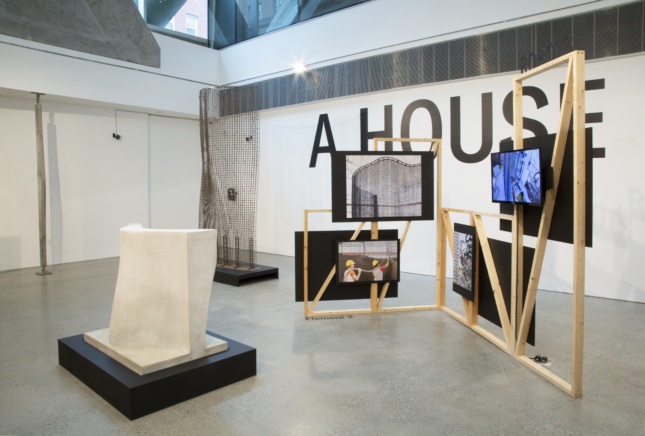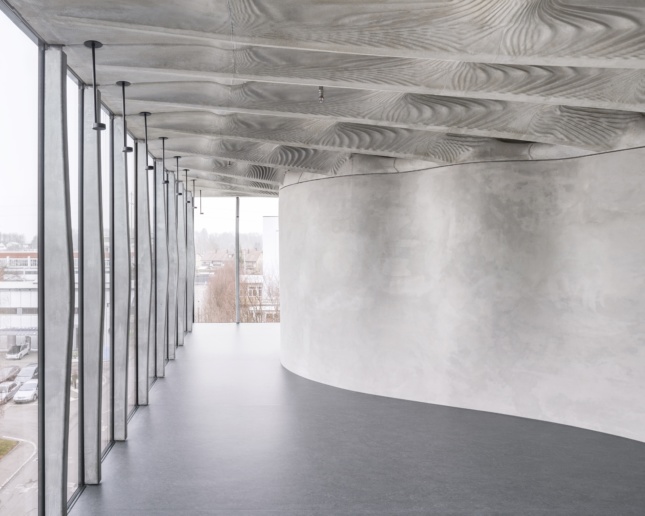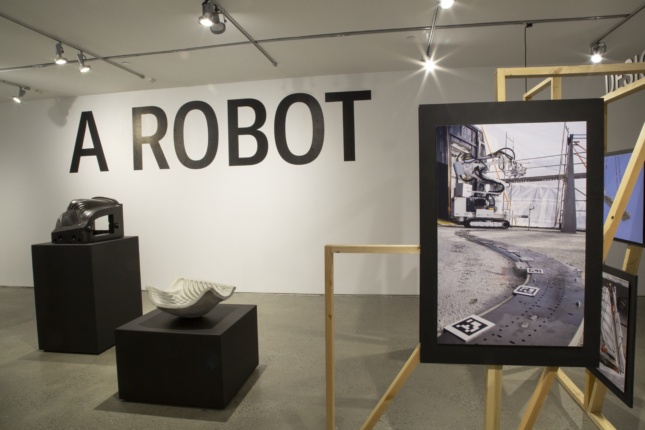As architects further blur the lines between science and design, lab and studio, and academia and practice, the experiments that arise from architect’s labs are changing the way the profession operates. With new digital fabrication and design tools and the university-fueled facilities to play with them, architects are able to reach in and engage with the physical construction process of their buildings more than ever before, altering a professional cultural divide that has been occupied by stonemasons, engineers, and contractors for millennia.
“Really, this is an opportunity for architects to get back a lot of power they’ve lost over the last century,” said Fabio Gramazio, “We finally have the tools to take these risks.”

Gramazio is a cofounder of Gramazio Kohler Architects, along with partner Matthias Kohler. But in 2000, the firm expanded into Gramazio Kohler Research (GKR) with the support of ETH Zurich, where the two both teach. The duo started tinkering with industrial robots, like those found in automobile factories, in the early aughts when they adapted the programmable arms for specific, repeatable building tasks like stacking bricks. However, they’ve come a long way since 2000.
How to Build a House, an exhibition on the future of digital architectural fabrication, opened at the Cooper Union last Thursday and showcases a body of research at GKR and their partners from the renowned DFAB House, Benjamin Dillenburger and Mania Aghaei Meibodi. The four architects walked me through the exhibition space, where pieces of their experiments on architectural robots, large-scale 3D printers, and VR visualizations were curated by Hannes Mayer. Displaying a sensuality through its intense realism, the exhibition breaks new ground and questions the role of the architect in the profession of architecture as well as in the traditional context of a construction site.
The technologies on display were adapted by these architects and tested for the first time in the real world with the construction of DFAB house, which was built on the third tier of the NEST building in Zurich. The inhabitable three-story structure is the first to be built almost exclusively with robots and digital technologies, designed from the computer screen up.
“But there’s no repetitiveness anywhere—except for maybe the screws,” said Dillenburger.

For the designers, the process of building the house itself was also a process of changing perspective and expectation. The new opportunities for digitizing age-old building methods like pouring concrete slabs, assembling timber structures, and shaping formwork further an already pressing question the profession is facing. As Kohler asks of his colleagues, “Is research the future of architecture, the core of the profession?”
But the technologies themselves, and their presentation, reinforce their reality and existence in the “now”—this is not a futuristic exhibition. Mayer has adroitly positioned standout pieces of text, like “Architect” and “A Robot” amidst 1:1 models of digitally fabricated, full-size mullions, real-time process videos, and even a complete piece of a detailed, 3D-printed concrete slab.

“It evokes an attractive industrial logic, as well as suggests a recipe,” says curator Mayer, gesturing to the thick black text that accompanies the eye as visitors travel around the non-linear exhibition floor, including the larger-than-life title type of How to Build a House.
And this recipe is still being tinkered with. “Concrete, like architecture, is only limited by convention,” Dillenburger told AN as he gestured to 3D-printed concrete details. “It can be freed if we change our ideas about what it should look like.”











